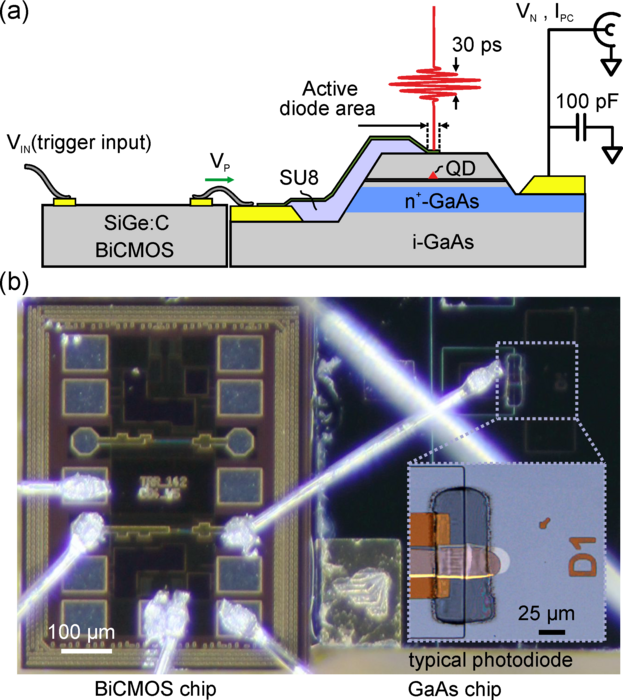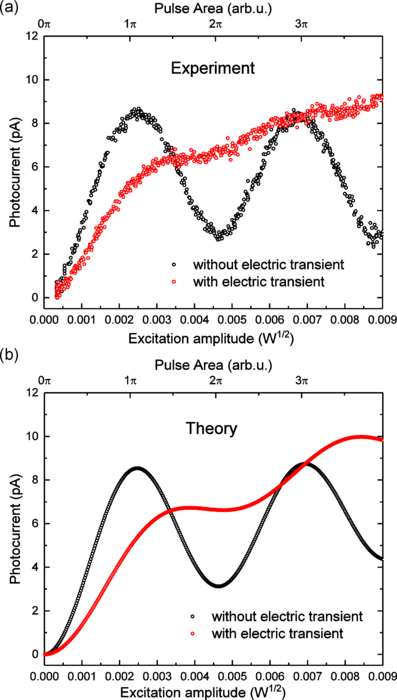Our recent paper entitled „Electrically controlled rapid adiabatic passage in a single quantum dot“ has been published in Applied Physics Letter. In this paper, we report the implementation of a scalable coherent optoelectronic approach, where transform limited optical laser pulses are used in combination with the electric transients. If applied to the quantum dot exciton we are able to achieve robust inversion of the exciton two level system (TLS) to perform electrically controlled rapid adiabatic passage (RAP).
Usually, coherent state preparation is accomplished by Rabi rotations, performed with resonant ps optical pulses. This technique needs precise laser intensity and energy control. Another well-known technique is based on the RAP. There the robust inversion is achievable using frequency chirped optical laser pulses. The RAP excitations require specific optical laser pulses tailored via specially designed dispersive elements for each application. This well-known concept misses scalability as well dynamic control over individual pulses.
In our work, we report a new coherent optoelectronic approach of electrically controlled RAP in a single quantum dot TLS. Here we implemented a scalable dynamic approach, where transform-limited optical pulses are used in combination with the ultrafast electric Stark tuning of the quantum dot TLS to perform RAP and achieve robust inversion of the quantum dot exciton.
To achieve our goal, we designed an ultrafast electric pulse generator as an integrated circuit based on the 0.13µm SiGe:C BiCMOS technology from the IHP Leibitz Institute. The pulse generator delivers tailored ps transients (<50ps) output from an input trigger with a slow input rise time (~500ps). Our designed electronics are capable to operate at cryogenic temperatures (4.2 K).
We were able to demonstrate the robust state preparation of an exciton qubit in a single semiconductor quantum dot by electrically controlled RAP using just Fourier limited optical pulses. Furthermore, theoretical simulations based on the optical Bloch equations very well confirmed our experimental results.
Finally, our novel approach of the electrically controlled RAP is a viable concept to perform the robust state control in a quantum system. It opens up the possibilities for scalable and extremely flexible control of a TLS quantum system down to the pulse-to-pulse time scales as well as the excitation of quantum systems in high Q photonic structures.
Authors: Dr. Alex Widhalm, Sebastian Krehs


